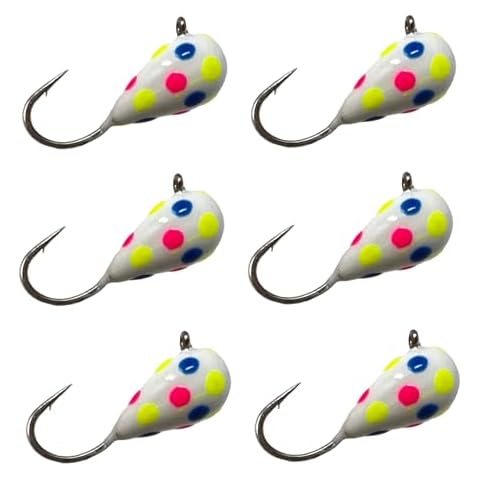Best Choices of Fishing Jigs for You
Introduction
Fishing jigs are an integral part of a fisherman's tackle box, providing versatility and effectiveness in a wide range of fishing situations. But with so many different types, styles, and sizes of jigs on the market, choosing the right one can be a daunting task. In this article, we'll provide some tips and guidelines to help you make the best selection for your specific fishing needs.
Consider the type of fish you're targeting
One of the most important factors to consider when choosing a fishing jig is the type of fish you're targeting. Different species of fish have different behaviors, habitats, and preferences, so the jig that works well for one type of fish may not be effective for another.
For example, if you're targeting largemouth bass, a jig with a soft plastic tail is often a good choice. The tail provides movement and attraction in the water, making it appealing to the bass. On the other hand, if you're targeting panfish like bluegill or crappie, a small, brightly colored jig may be more effective.
Consider the conditions of the water
In addition to the type of fish you're targeting, it's also important to consider the conditions of the water when choosing a fishing jig. Different jigs are designed for different water depths, currents, and bottom types, so it's important to choose a jig that is suited to the specific conditions you'll be fishing in.
For example, if you're fishing in shallow water with a rocky bottom, a jig with a weedless design (meaning it won't get caught on underwater vegetation or debris) may be a good choice. This will allow you to fish effectively in areas with heavy cover, where largemouth bass and other fish may be hiding.
On the other hand, if you're fishing in deep water with a sandy bottom, a jig with a heavy head and a soft plastic tail may be more effective. The heavy head will help the jig sink quickly to the bottom, while the soft tail will provide movement and attraction in the water.
Consider the size and color of the jig
The size and color of the jig are also important factors to consider when making your selection. In general, the size of the jig should be matched to the size of the baitfish in the area you're fishing. For example, if you're fishing in an area where the baitfish are small (like minnows or shad), a small jig is often a good choice. On the other hand, if the baitfish are large (like shiners or bluegill), a larger jig may be more effective.
As for color, it's often best to choose a jig that closely matches the natural colors of the baitfish in the area. This will make the jig more appealing to the fish and increase your chances of success. However, in some cases, using a brightly colored jig can be effective. For example, if the water is murky or the light is low, a brightly colored jig may be more visible to the fish.
Conclusion
Choosing the right fishing jig can be a challenge, but with the right knowledge and understanding of the factors that affect jig selection, you can make an informed decision and increase your chances of success on the water. By considering the type of fish you're targeting, the conditions of the water, and the size and color of the jig, you can choose a jig that is well-suited to your specific fishing needs.











